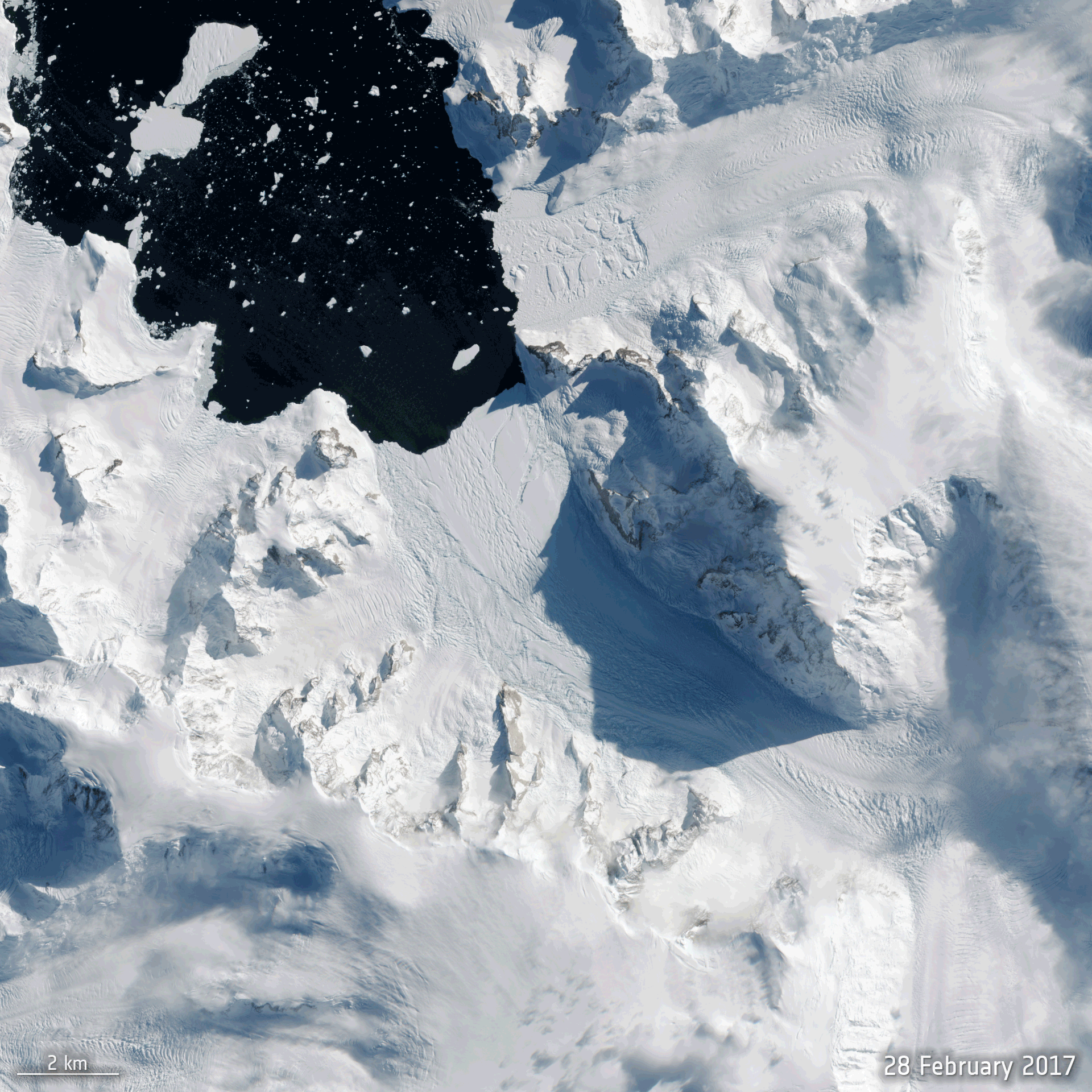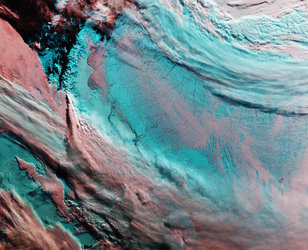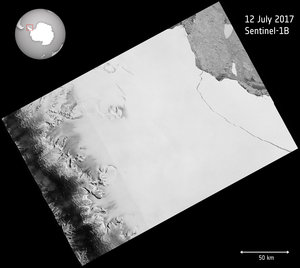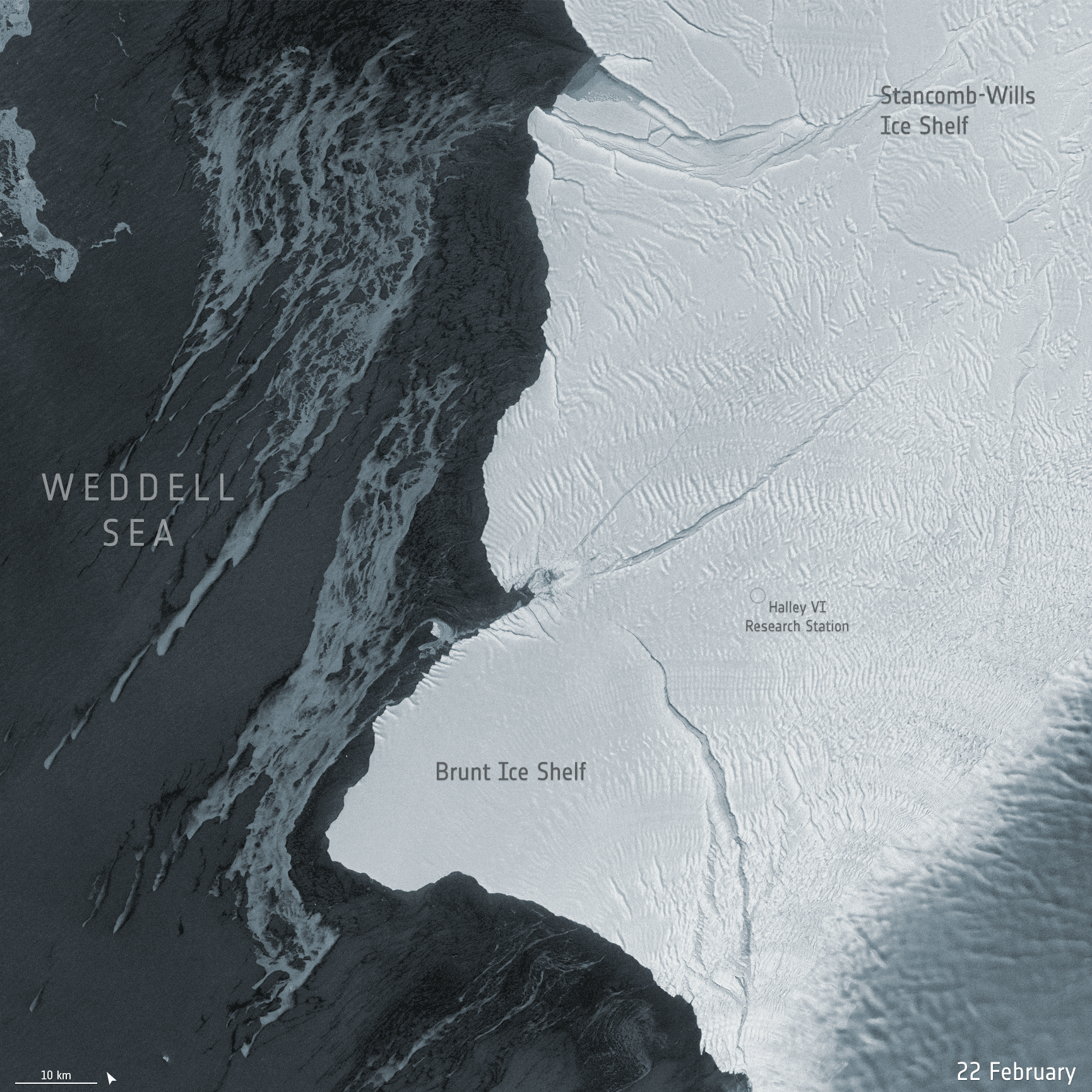


The changing face of Cadman Ice Shelf
Using satellite data, scientists have discovered that the ice shelf extending into the ocean from Cadman Glacier on the west Antarctic Peninsula collapsed leaving the glacier exposed to unusually warm ocean water, which caused the glacier to accelerate and retreat rapidly.
The research, published in Nature Communications, describes how a team of scientists, from the University of Leeds, Lancaster University, ENVEO, the University of Delaware and the British Antarctic Survey, used data from nine different satellite missions, including ESA’s CryoSat and Europe’s Copernicus Sentinel-1, along with in-situ measurements to map how the floating ice shelf and glacier changed.
The images here use acquisitions from the Copernicus Sentinel-2 mission to show how the ice shelf changed between 28 February 2017 and 19 November 2023.
Read full story: Warming ocean causing rapid glacier retreat





